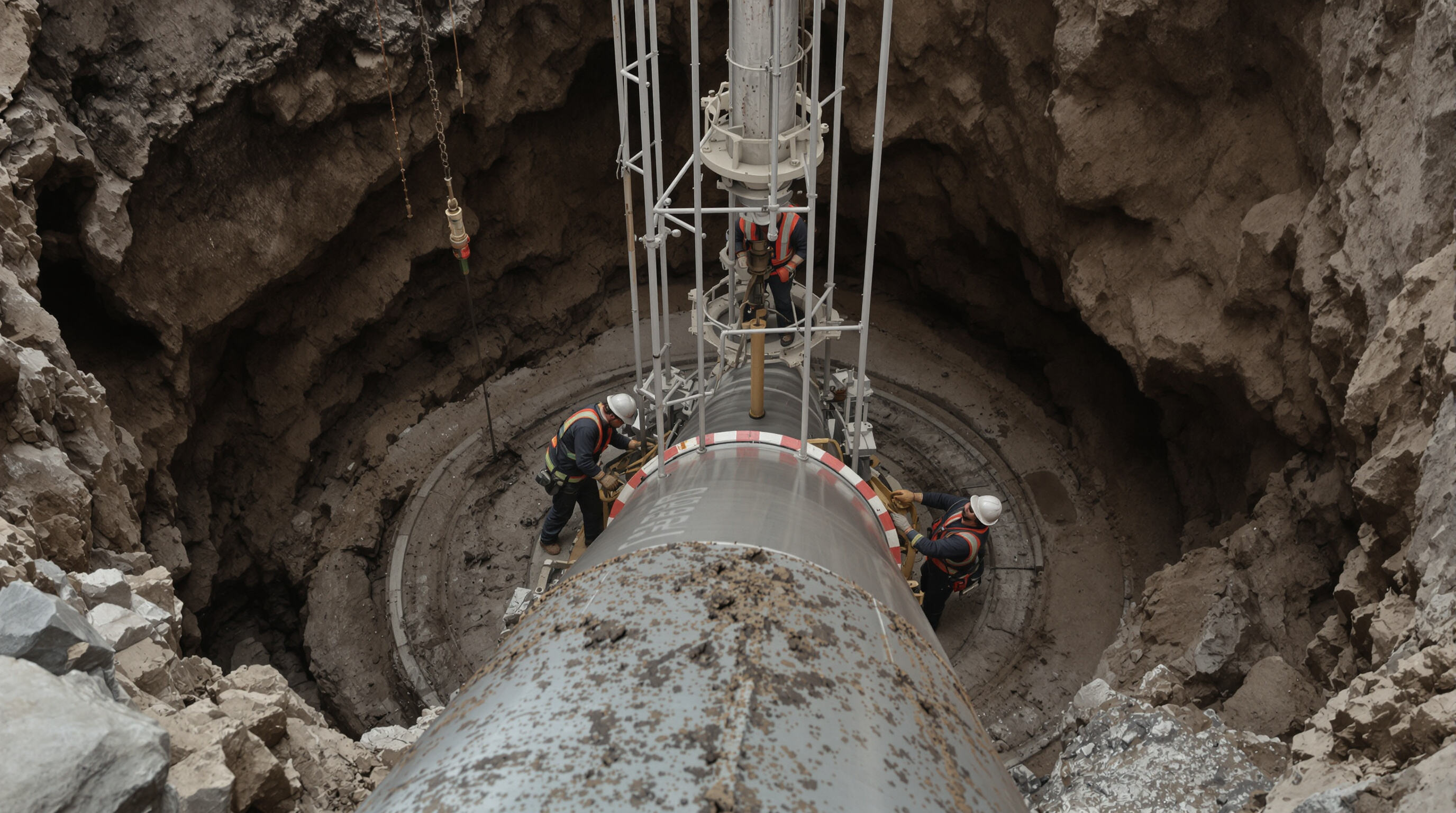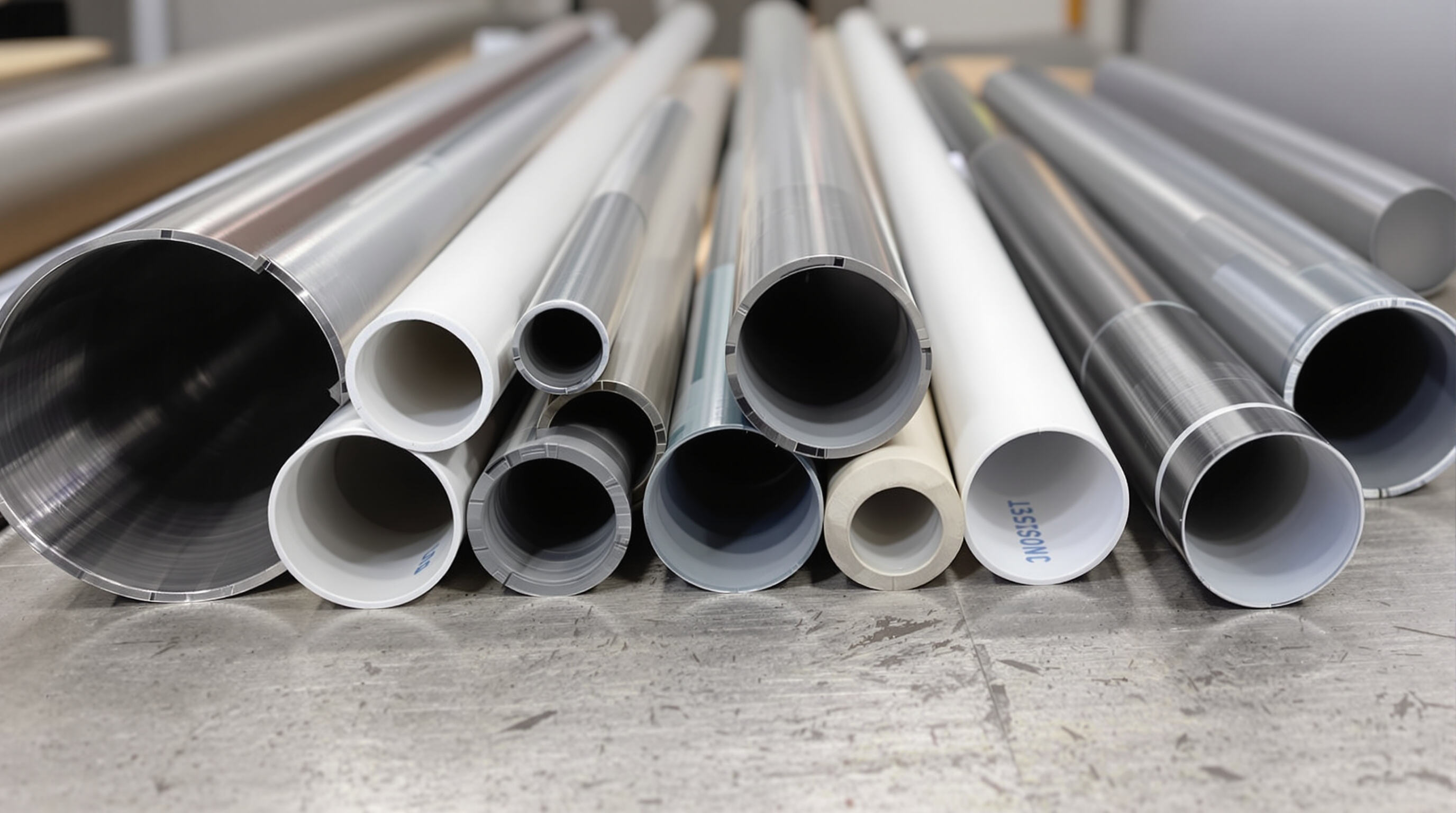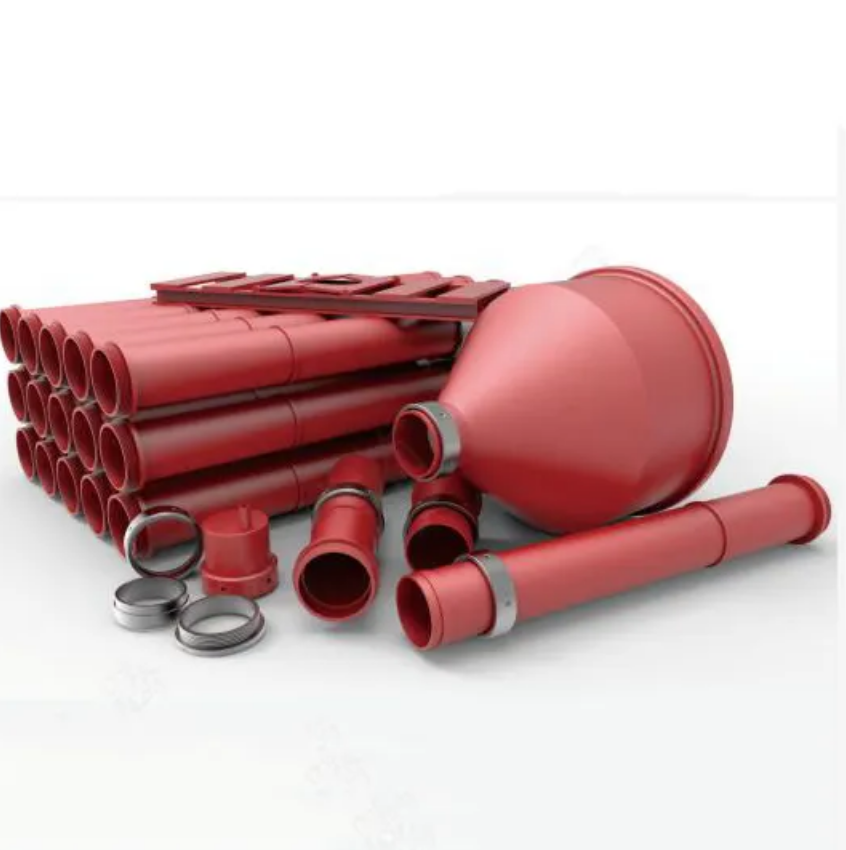Კასინგის მილის ძირეული როლი გზავნის მდგრადობასა და უსაფრთხოებაში Კერძო ტუბი გზავნის მდგრადობასა და უსაფრთხოებაში

Კაკჲ Კერძო ტუბი Ახდენს გზავნის ჩანჩქერის პრევენციას ბურღვის პროცესში
Კასინგის მილი გზავნისთვის სტრუქტურული ექსოსკელეტის როლს ასრულებს, რომელიც წინააღმდეგობას უწევს გვერდითი დედამიწის წნევას, რომელიც საშუალოდ 4,300–8,600 PSI შისტის წარმონაქმნებში (2024 წლის ბურღვის უსაფრთხოების ანგარიში). მისი მიერ დაბურღული სექციების დასახურვით იგი აწევს ორ ძირითად ჩანჩქერის მექანიზმს:
- Გაუწყვეტი ნიადაგის მოშლა ზედაპირქვეშა წარმონაქმნებში (0–500 ფუტის სიღრმე)
- Გელის შე swellingვა გამოწვეული გათხრის სითხეების ურთიერთქმედებით უფრო მეტ სიღრმეზე
Კონდუქტორის კასეტა - პირველი ხაზის დაცვა - ამცირებს ზედაპირული გამოქვაბილების რისკს 78%-ით დაუშვებელი გათხრის გამართული გათხრის გამოცდების შედეგად.
Ქვემიწიერი წნევის მართვა ეფექტურით Კერძო ტუბი Გაშლა
Თანამედროვე მრავალსტრიქონიანი კასეტის დიზაინი ქმნის ჰიდრავლიკური იზოლაციის ზონებს, რათა შეიცავდეს ფორმაციის წნევას, რომელიც აღემატება 15,000 PSI ღრმა რეზერვუარებში. ზედაპირული კასეტა (როგორც წესი, API J55 კლასი) შეიცავს მის პირველი 48 საათის განმავლობაში მიდამოების 83%-ს, 2023 წლის IADC მონაცემების მიხედვით. შუა კასეტა ახლავს კრიტიკულ გადასვლებს წნევის რეჟიმებს შორის:
| Წნევის ტიპი | Კასეტის ამოხსნა | Დახვეწის შემცირება |
|---|---|---|
| Ჰიდროსტატიკური | Ცემენტით დამაგრებული კვანძები | 64% |
| Დიფერენციალი (ზონა-ზონა) | Პრემიუმ ნამონტაჟი შეერთებები | 89% |
Ეს ფენოვანი მიდგომა უზრუნველყოფს ზონების იზოლაციას და ამცირებს ავარიული გაფრქვევის რისკს ბურღვისა და წარმოების პროცესში.
Შესწავლილი შემთხვევა: საშუალო სიღრმის არასწორი მიმაგრების შედეგები სამილე ნავთობის მოპოვების პროექტში
2021 წელს მექსიკის ყურეში მომხდარმა შემთხვევამ გამოიწვია 740 მილიონი დოლარის აღდგენითი ხარჯები შუალედური საშუალოს კოროზიის გამო, რამაც მეთანის გადატანა დაუშვა გამარტივებული წყლის აკვიფერში. საშუალოს გასაშვებად 3D ცემენტის ბონდის ლოგირების ანალიზი აჩვენა:
- Არასრული ცემენტის საფარი საშუალოს სიგრძის 37% -ზე
- Ნამონტაჟის გაშვით 8 შეერთების წერტილში 14,000 ფუტის ქვემოთ
- Სტრესული ნაფენები წარმოქმნილი სულფიდწყალბადის მდიდარი ზონიდან
11-თვიანი აღმართვის მცდელობა მოითხოვდა სამი გამოშვების კურთხევას – შედეგი, რომელიც ამაყურადღების კოროზიის მონიტორინგით და დუბლირებული კასინგის დიზაინით უფრო ვიწროვანად უნდა დაიცვალა.
Გარემოს დაცვა და სტრუქტურული მთლიანობა სწორად დაყენებული კასინგით
Კასინგის მილი არის არასაშუალოდ საჭირო გარემოს რესურსების დაცვისთვის და სამუშაო უსაფრთხოებისთვის. მისი სწორი დაყენება პირდაპირ განსაზღვრავს ღრუბლის გრძელვადიან მთლიანობას და რეგულატორულ შესაბამსიანობას.
Მიწისქვეშა წყლის დაბინძურების თავიდან აცილება მაგალითით Კერძო ტუბი სისტემები
Როდესაც ბურღვის მილები დროთა განმავლობაში იწყებენ გაუმართლობას ან გატეხილობას, ისინი იძლევიან საშუალებას სხვადასხვა სახის მავნე ნივთიერებებს, როგორიცაა ნავთი, ბურღვის ილური და მარილიანი წყალი, გადაინაცვლონ მიწისქვეშა წყაროებში. ეს ნამდვილად ერთ-ერთი მაინც გზაა, რომლითაც მიწისქვეშა წყლები დაბინძურდებიან ნავთისა და ბუნებრივი აირის მოპოვების დროს. გარემოს დაცვის სააგენტომ გააკეთა კვლევა წელზე უკან, რომელმაც აჩვენა საკმარისად მნიშვნელოვანი მონაცემი: კარგი API კლასის მილებით აშენებულ ბურღილებში დაბინძურების გამოტეკვის ალბათობა დაახლოებით 89 პროცენტით ნაკლები იყო იმ ბურღილებთან შედარებით, რომლებიც ირიბ მასალებით იყო აშენებული. დღესდღეობით უმეტესობა ახალგაზრდა ბურღვის სისტემები იყენებს ორმაგ კედლიან მილებს და გეოპოლიმერებიდან დამზადებულ სპეციალურ ცემენტურ ბარიერებს წყლის გატარების მქონე მარცვლოვანი ქანების დასახურად. იმ კომპანიებს, რომლებიც მოწვეულ ექსპერტებს უფრთხილდებიან მილების მთლიანობის შესამოწმებლად, მოგვიანებით გაცილებით ნაკლები პრობლემა აქვთ დაბინძურებული მიწისქვეშა წყლის ადგილების გასაწმენდად, რაც დასტურდება 2022 წელს ეროვნული მიწისქვეშა წყლების ასოციაციის მონაცემებით, რომლებიც აჩვენებენ დაახლოებით 72 პროცენტიან შემცირებას გასაწმენდი შემთხვევების რაოდენობაში ამ მომპოვებლების შემთხვევაში.
Სტრუქტურული მთლიანობის და გრძელვადიანი გარემოს უსაფრთხოების დარტყმა
Ინჟინრებმა უნდა შეუტასონ მექანიკური მოთხოვნები გრძელვადიანი გარემოს დაცვის მიზნებთან. მნიშვნელოვანი დიზაინის განხილვები შედის:
- Წნევის მაჩვენებლიანი სანგრიში განკუთვნილია მინიმუმ 1.5-ჯერ მეტი წნევის გასაძლებლად, ვიდრე მოულოდნელია საბურღი წნევა
- Გალვანური კოროზიის ბუფერები მაღალ მარილიანობის გარემოში
- Რეალური დროში მონიტორინგის სისტემები მიკროტრაქციების ადრე გამოვლენა სითხის გადინებამდე
Ბოლო ანალიზები აჩვენებს, რომ IoT-ის საშუალებით სანგრიშის ტექნოლოგიები და ჩაშენებული სენსორები ამცირებს გრძელვადიან გარემოსთან დაკავშირებულ პასუხისმგებლობას დეფორმაციის ან კვანძის გამართული მუშაობის ადრე გამოვლენის შესაძლებლობით.
Მოკლევადიანი ხარჯების დაზოგვა წინა გრძელვადიანი რისკების: არასათანადო სანგრიშის არჩევანის შეფასება
Ზომიერი ან სერტიფიცირებული მასალების გამოყენება თავდაპირველად იწვევს ხარჯების შემცირებას, მაგრამ სინამდვილეში კი ამით კომპანიები მოგვიანებით დიდ თანხებს ხარჯავენ. 2022 წელს ტეხასის უნივერსიტეტის მიერ ჩატარებული კვლევა აჩვენებს, რომ შემომავალი მილების გამართვისას და მათი შეცვლის საჭიროების შემთხვევაში, საშუალო ხარჯები იზრდება დაახლოებით $740,000-მდე, რაც სამჯერ აღემატება სწორი მოწყობის საწყის ღირებულებას. ასევე ინდუსტრიის პროფესიონალებიც ხშირად ხვდებიან ასეთ სიტუაციებს. მაგალითად, შერჩეული მარმარილოს გამოყენება ქვიშის წარმონაქმნებში ვერ უზრუნველყოფს გრძელვადიან მუშაობას, რადგან ასეთი მილები ხუთი წელზე ნაკლებ ვადაში საშუალოდ 42%-ში გამოდგება. ასევე არ უნდა დამახსოვრდეს კათოდური დაცვა იმ ადგილებში, სადაც კოროზია არის პრობლემა – ეს უბრალოდ საფრთხის მოწვევაა. ფინანსური ზარალი კი დაკარგული წარმოების დროით არ შეიზღუდება. კომპანიები, რომლებიც ბილთან დაკავშირებული ინციდენტების გამო გადასახდელ ჯარიმებს უფლებებს ექვემდებარებიან EPA-სთან დაკავშირებით, უნდა ელოდნენ იმ შემთხვევაში რომ თითოეული შეცდომის შემთხვევაში ორზე მეტი მილიონი დოლარის გადახდას.
Ინჟინრული და დიზაინის ფაქტორები ოპტიმალურისთვის Კერძო ტუბი Შესრულება
Დიზაინირება Კერძო ტუბი Ხსნარები მიწის შემადგენლობისა და ბორბორის სიღრმის საფუძველზე
Მიწის ტიპმა დიდი ზემოქმედება მოახდინა კითხვაზე, თუ რომელი სახის გარსი არის საჭირო კუდის ინსტალაციებისთვის. ქვიშიან მიწებში ხშირად საჭიროა უფრო მაგარი გარსი, რომელმაც უნდა შეძლოს დამალვის წინააღმდეგ წინააღმდეგობა, ვიდრე იმ ადგილებში, სადაც მიწის უმეტესობა თიხით არის დამზადებული. ზედაპირიდან დაახლოებით 300 მეტრზე ნაკლები სიღრმის მქონე კუდები ხშირად კარგად მუშაობს თანური პვხ მილებით, მაგრამ როდესაც ჩვენ ზედაპირიდან დაახლოებით 800 მეტრზე მეტ სიღრმეში ვმუშაობთ, ფოლადი ხდება საუკეთესო არჩევანი, ვიდრე ჩვეულებრივი მასალები უბრალოდ ვერ უმკლავდებიან იქ არსებულ დაჭიმულობას. 2023 წელს გეოთერმული ადგილების მონაცემების გადახედვისას, ინჟინრებმა რაღაც საინტერესო დაასკვნეს, როდესაც გარსის ზომები და მასალები სპეციფიკურად ადგილობრივი მიწის შემადგენლობის მიხედვით შეუსაბამეს სტანდარტული სპეციფიკაციების ნაცვლად. მათ პროექტებში ჩამორჩა დაახლოებით ორმოცი პროცენტით ნაკლები ავარიული შემთხვევები, რაც აჩვენებს, თუ რამდენად მნიშვნელოვანია აღჭურვილობის შესაბამისობა ადგილობრივ პირობებთან, სამაგიეროდ ზოგადი მიდგომების გამოყენებისა.
Გეოტექნიკური მონაცემების გამოყენება საშუალებას გვაძლევს რეალურ დროში გარსის დიზაინის კორექტირებას
Ბურღღვის გუნდები უკვე იყენებენ ბორბორქვეშა სენსორებს ოპერაციების დროს შესაბამისად საშენი მილების სპეციფიკაციების გასათანსახმებლად. მაგალითად, არასასურველი ქვიშის ფენების შეხვედრის შემთხვევაში შესაძლოა დაგჭირდეთ პროექტის შუა სამუშაოში გადართვა მაღალი ხარისხის ფოლადზე. API Spec 5CT უჭერს მხარს იტერაციულ სამუშაო პროცესებს, სადაც რეალურ დროში მიღებული მონაცემები უზრუნველყოფს კორექტირებას:
| Გეოლოგიური რისკი | Კონსტრუქციის გადაკეთება | Შედგენის გავლენა |
|---|---|---|
| Წნევის მოულოდნელი მომატება | Კედლის სისქის გაზრდა | Შემოქვეშის წინააღმდეგ წინაღობა +27% |
| Მჟავა გრუნტის წყალი | Ეპოქსიდური საფარით დამუშავებული კვეთები | Კოროზიის სიჩქარე შემცირდა 41%-ით |
Ეს ადაპტიური სტრატეგია ზრდის სანდოობას ზედმეტად გადატვირთული ინჟინერიის გარეშე.
Მოსალოდელი გეოლოგიური დატვირთვის პირობების შესაბამისად კედლის სისქის შერჩევა
Კედლების დიზაინის დროს სამუშაო ინჟინრები განიხილავენ როგორც მუდმივ წონას ქვიშა ზემოთ (სტატიკური დატვირთვა), ასევე მიწისძვრის შედეგად მომდევნო ძალებს (დინამიური დატვირთვა). მაგალითად ავიღოთ ანადარკოს აუზი ოკლაჰომაში. როდესაც მათ შემკვდელებმა გაზარდეს კედლის სისქე ნაფილტვის არეში ნახევარი დიუმიდან სამ მეოთხედ დიუმამდე, მათი გარსის სიცოცხლის ხანგრძლივობა მკვეთრად გაიზარდა დაახლოებით შვიდი წელზე დაახლოებით ოცი წელამდე. ამერიკის პეტროლეუმის ინსტიტუტს ასევე აქვს ამ თემასთან დაკავშირებული რჩევები. მათი ტექნიკური ანგარიშის 5C3 არეკომენდებს საჭირო მნიშვნელობის 1.25-ჯერ უსაფრთხოების ფაქტორს. ეს საშუალებას გვაძლევს დავიცვათ მასალის გამოყენების ხარჯები და არ გადავაჭარბოთ კედლის სისქეში.
Მასალების ინოვაციები და არჩევანი თანამედროვე Კერძო ტუბი Ტექნოლოგია

Ფოლადის, PVC-ს და კომპოზიტის შედარება Კერძო ტუბი Მასალების შედარება მახასიათებლების მიხედვით
Ფოლადი კვლავ ითვლება ღრმა ბურღოვანი ღონისძიებების საუკეთესო ამბების შესრულების მასალად მისი შესანიშნავი სიგრძის სიმტკიცით, რომელიც ბოლო ინდუსტრიული ანგარიშების მიხედვით მერყეობს დაახლოებით 55k-დან 80k psi-მდე. რა თქმა უნდა, PVC მილები ზოგავენ ფულს ადამიანებისთვის მარტივი ინსტალაციების დროს, მაგრამ ისინი ვერ გაუმკლავდებიან ძალიან მაღალ ტემპერატურას 140 ფარენჰეიტის ზემოთ, რაც უფით ხდის მათ გეოთერმული პროექტების ან მაღალი წნევის ქვეშ მდებარე ადგილებისთვის გამოყენებას. ახლა ისაუბრეს კომპოზიტური მასალების შესახებ, როგორიცაა მინანძით დამაგრებული პოლიმერები, რომლებიც ასევე იძლევიან საუკეთესო შედეგებს. ეს მასალები დაახლოებით 40 პროცენტით ივლიან ნაკლებს ტრადიციული ფოლადის ანალოგებთან შედარებით და ვერ იქნებიან კოროზიის მიმართ მდგრადები ველის ტესტების დაკვირვებების მიხედვით. ასეთი სახის სამუშაოებისთვის მასალების არჩევისას მომხმარებლებმა რამდენიმე მნიშვნელოვანი ასპექტი უნდა გაითვალისწინონ...
- Გეოლოგიური დატვირთვის პროფილები
- Ქიმიური ზემოქმედების რისკები
- Ინსტალაციის სიღრმის მოთხოვნები
Კოროზიისგან დაცვის საშუალებების გაუმჯობესება გრძელვადიანი სამსახურის ვადისთვის
Წყაროების მიხედვით, გამოშვებულია NACE International-ის მიერ ბოლო წელს, ეპოქსი-ფენოლის ჰიბრიდული საფარი შეიძლება ნამდვილად გაარგოს მილების სიცოცხლის ხანგრძლივობა მარილიან გარემოში 8-დან 12 წელზე. რა უზრუნველყოფს ამ საფარის ეფექტურობას? ისინი ძირითადად მრავალშრიანი სისტემებია, რომლებიც იღებენ ჩვეულებრივ ცინკის შენადნობის მასალებს და აერთებენ მათ ნანოტექნოლოგიებით დამაგრებულ სპეციალურ პოლიმერულ საფართან. შედეგად? მოხმარების ხარჯები მკვეთრად იკლებს - დაახლოებით $740,000 დაზოგვა თითო მილზე, როდესაც განიხილავენ ნავთის ბორბორის მთელი ციკლს. მონაცემები მექსიკის ყურიდან ასევე გვიყვება სხვა ისტორიასაც. როდესაც შევადარებთ დაფარულ და უსაფრის მილებს, იმ მილებს, რომლებზეც დაცვითი ფენაა, გააჩნიათ დაახლოებით 21 პროცენტით უკეთ შესრულება ეროზიის პრობლემების წინააღმდეგ. კომპანიებისთვის, რომლებიც მუშაობენ კოროზიულ საზღვაო პირობებში, ასეთი დაცვა წარმოადგენს როგორც ფულის დაზოგვას, ასევე მუშაობის სიცოცხლისა და საიმედოობის გაუმჯობესებას, რაც მნიშვნელოვან როლს თამაშობს ყოველდღიურ საქმიანობაში.
Მაღალი ხარისხის მასალები წინა პლანში არის მოშორებული ადგილების ლოგისტიკური გამოწვევების წინააღმდეგ
Მაღალი ხარისხის შენადნობები და კომპოზიტები საუკეთესო მუშაობის უპირატესობებს გვთავაზობენ, მაგრამ სერიოზულ პრობლემებს უბრძვიან, როდესაც მათ მოშორებულ ადგილებში მიტანა სცდილობენ. 2022 წელზე დაუშვა მკინზის კვლევამ, რომ ასეთი მასალების მიწოდება მანძილის გაზრდის პროპორციულად უფრო და უფრო ხარჯიანი ხდება. რიცხვები ნამდვილად შოკირებულია. თითო დამატებითი 1000 მილის მოშორების შემთხვევაში მასალების ტრანსპორტირების ხარჯები სამჯერ იზრდება. ამიტომ უკვე პერმის აუზში მოშორებულ ადგილებში მუშაობისას დაიწყო კომპოზიტებისთვის მოდულური დამზადების სისტემების გამოყენება. სისტემებმა ადგილზე შედუღების საჭიროება დაახლოებით ორი მესამედით შეამცირეს. ადგილზე მუშა ჯგუფები ახლა უკვე იყენებენ პორტატიულ ტესტირების მოწყობილობებს მასალების სტანდარტებთან შესაბამისობის შესამოწმებლად დამაგრებამდე. ასეთი მიდგომა პროექტების განვითარებას უზრუნველყოფს ხარისხის კონტროლის შენარჩუნებით მთელი პროცესის განმავლობაში.
Ხელიკრული
-
Რატომ არის ბადის მილის მნიშვნელობა ბურღულის მოპასუხე მოვლებში?
Ბორეკის მილები უზრუნველყოფს მილში სტრუქტურულ მხარდაჭერას, წინააღმდეგობას უწევს გვერდით მიწის დაჭერას და არიდებს განუმაგრებელი ნიადაგის მოშლას და თიხის შე swelling ს ბურღვის დროს.
-
Როგორ ახერხებს ბორეკის მილი ქვედა წნევის მართვას?
Ბორეკის მილები ქმნიან ჰიდრავლიკურ იზოლაციის ზონებს, შეიცავს ფორმაციის წნევას საღრმა სარეზერვოებში და ეხმარება ავარიებისა და წნევასთან დაკავშირებული რისკების თავიდან ასაცილებლად ბურღვისა და პროდუქციის დროს.
-
Რა გარემოზე დადებითი ზემოქმედება აქვს ბორეკის მილების სწორ დაყენებას?
Ბორეკის მილების სწორი დაყენება არიდებს დამაბინძურებლების ჩამონადენს მიწისქვეშ წყალმარაგების წყაროებში, ამცირებს მიწისქვეშ წყლის დაბინძურებას და ამასთან დაკავშირებულ აღდგენით სამუშაოებს.
-
Რომელი მასალები გამოიყენება ბორეკის მილებისთვის?
Ბორეკის მილები ძირითადად დამზადებულია ფოლადისგან, PVC-დან და კომპოზიტებისგან, რომლებიც აირჩევა გეოლოგიური პირობებისა და წნევის მოთხოვნების დამოკიდებულებით.
-
Როგორ აგრძელებს ბორეკის მილების საფარის ტექნოლოგიების გაუმჯობესება მომსახურების ვადას?
Ასეთი საფარის, როგორიცაა ეპოქსი-ფენოლის ჰიბრიდები, გარშემორტყმული სიცოცხლის ხანგრძლივობა იზრდება კოროზიის საწინააღმდეგო დაცვით და შენარჩუნების ხარჯების შემცირებით, განსაკუთრებით მარილიან და კოროზიულ გარემოში.
Შინაარსის ცხრილი
- Კასინგის მილის ძირეული როლი გზავნის მდგრადობასა და უსაფრთხოებაში Კერძო ტუბი გზავნის მდგრადობასა და უსაფრთხოებაში
- Გარემოს დაცვა და სტრუქტურული მთლიანობა სწორად დაყენებული კასინგით
- Ინჟინრული და დიზაინის ფაქტორები ოპტიმალურისთვის Კერძო ტუბი Შესრულება
- Მასალების ინოვაციები და არჩევანი თანამედროვე Კერძო ტუბი Ტექნოლოგია


